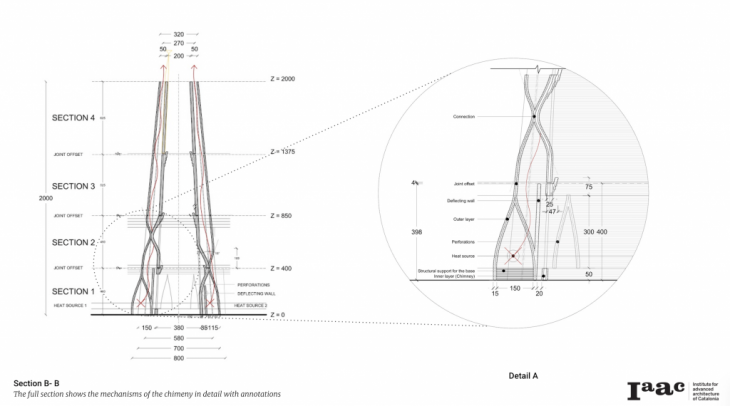Project presented at the “Terracotta Biennal” of La Bisbal in October 2020.
In the renowned context of ceramic crafts of Northern Catalonia, IAAC joined forces with the ceramists of La Bisbal to develop a unique solution for 3D printing with Clay. The project was oriented to designing and building a structure that acts as its own oven in order to be actively fired on site, from adobe, into a ceramic architectural element.
In order to transform earth into ceramics – which has higher structural resistance, is waterproof and has the potential of more performative climatic properties – it needs to be progressively heated at 1200ºC enabling its vitrification. This process is often used in construction for elements such as bricks or tiles. In order to reach these temperatures, parts need to be placed in a kiln where they are fired. Industrial kilns vary in size, but the largest ones don’t exceed the size of a small room, dictating and limiting the scale of the construction fired elements, as well as forcing the process to be completed off-site, rather than actively on site.
How can we design and construct a building that enables it to be its own kiln? Fenix is a research project of on-site firing of architectural elements that appropriates the capacity of 3D printing to work with cavities: the design of these narrow spaces is used in order to channel fluxes of heat throughout the inside of a wall in order to fire it, converting it into ceramic and strongly enhancing its structural property.
To avoid cracking, the firing temperature inside and outside of any object needs to be equal, hence the most common technique to facilitate this control being to place them in a kiln. This project takes advantage of 3D printing and its possibility to construct cavities that can take on the role of the kiln in order to print a column surrounded by an additional layer that only serves the temporary role of maintaining the heat inside. After the firing at 1200ºC during 15 hours, this temporary layer is removed, revealing the column that had partially vitrified.
For this first large scale experiment in firing earth prints, the typology of the column was used, with the intention to bring this technique to other architectural elements, such as walls, and finally all the way to the scale of buildings. Its key advantage is on-site firing: being able to print an earthen building and fire all, or some of its parts, without having the necessity to use off-site processes such as a kiln.
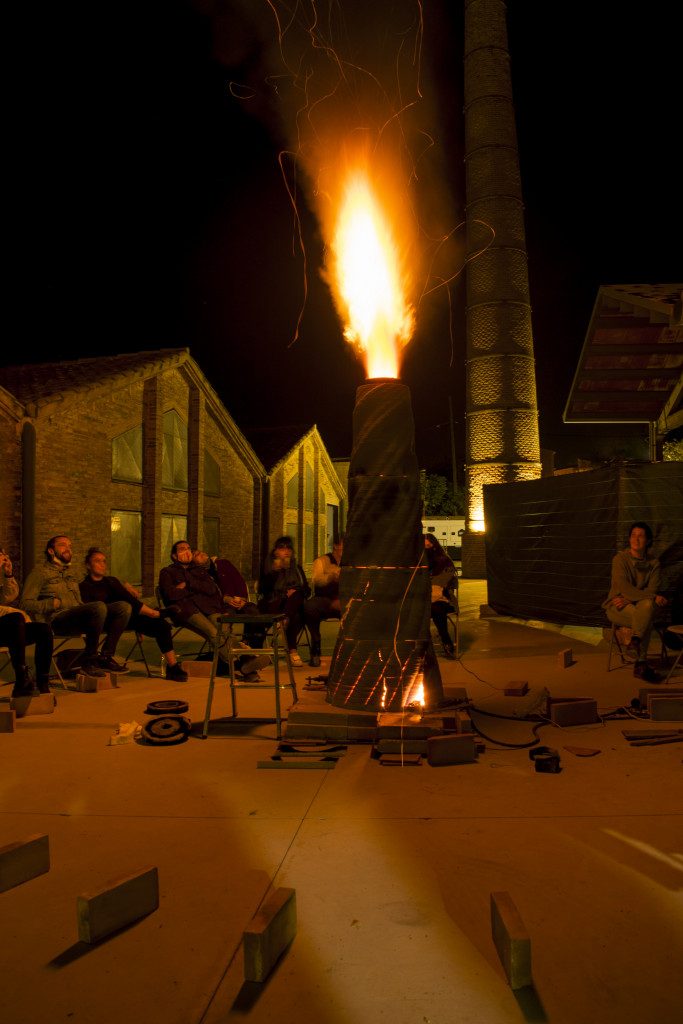
The project consists of 3 abstract layers :
- Inner printed surface
- Theoretical analysis surface
- Outer printed surface
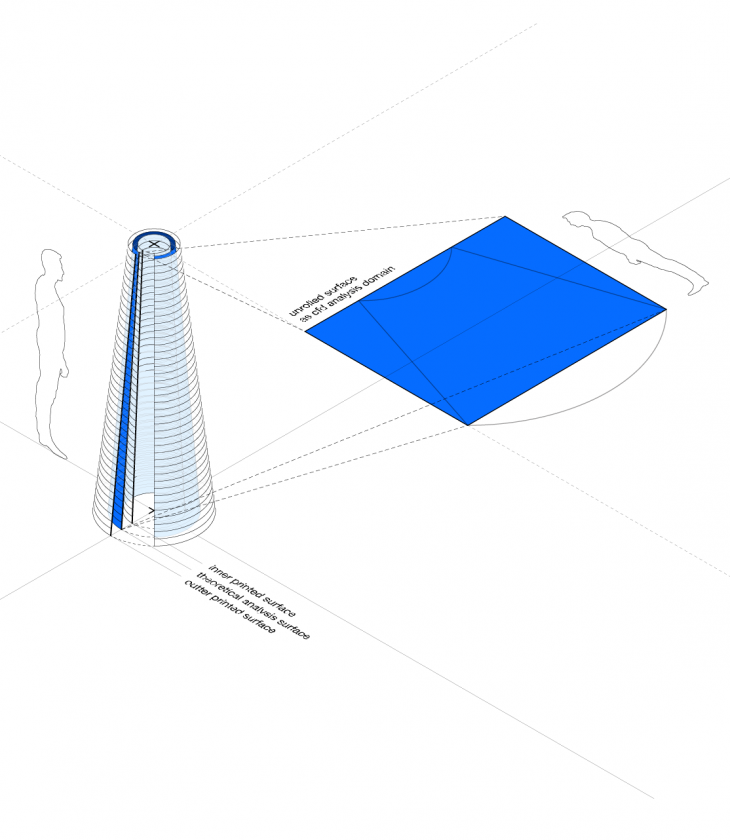
CFD analysis:
The analysis of the z-velocity gives us an idea of the air flow inside the chimney.
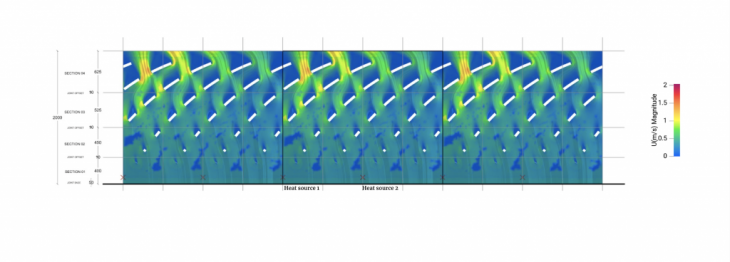
Two layers :
The plan of the final drawing showing the contours to give an idea of the heights of the connections which will be rolled into the geometry.
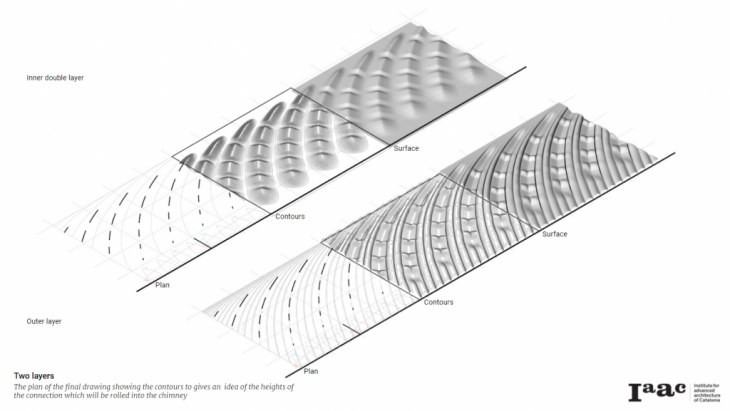
Rolling back :
Eventually the layers are rolled back to the base abstraction.
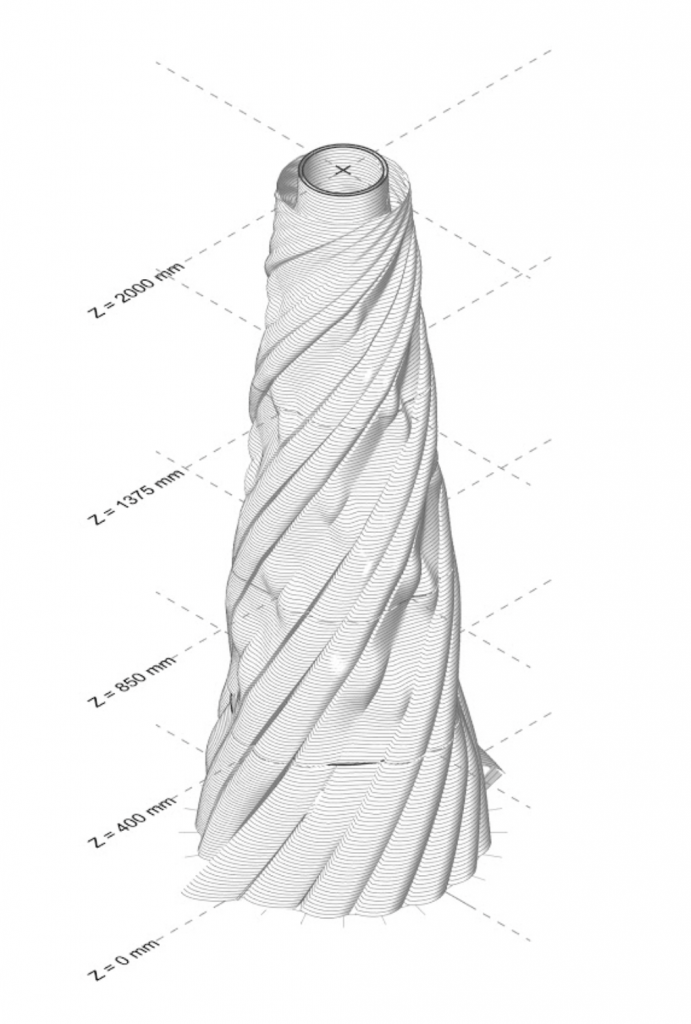
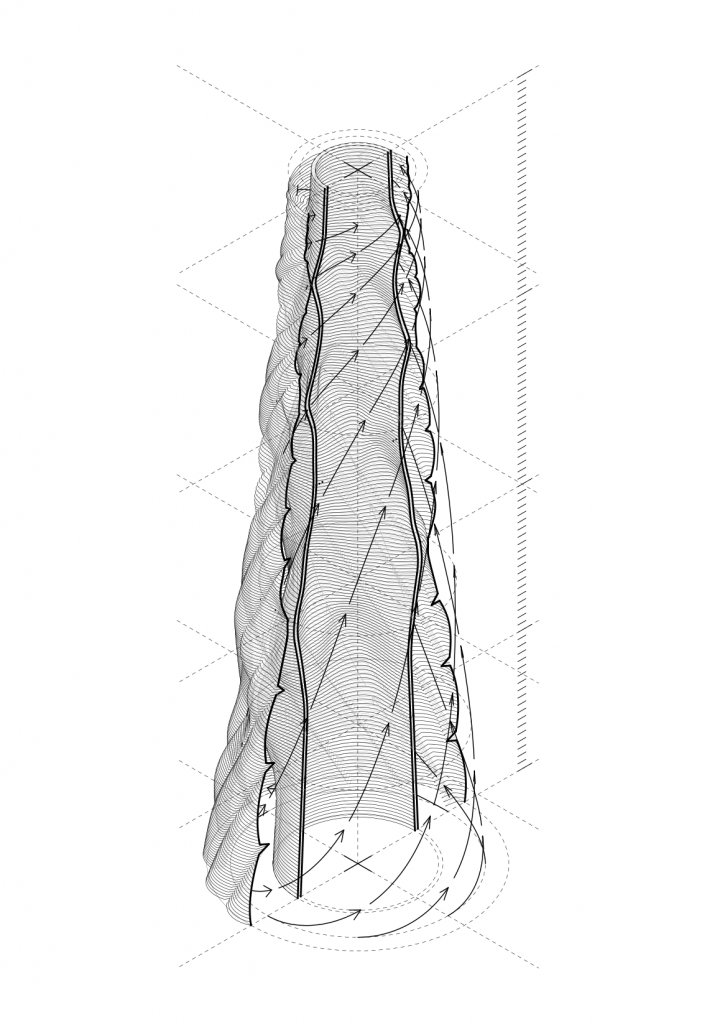
Plans and Sections :
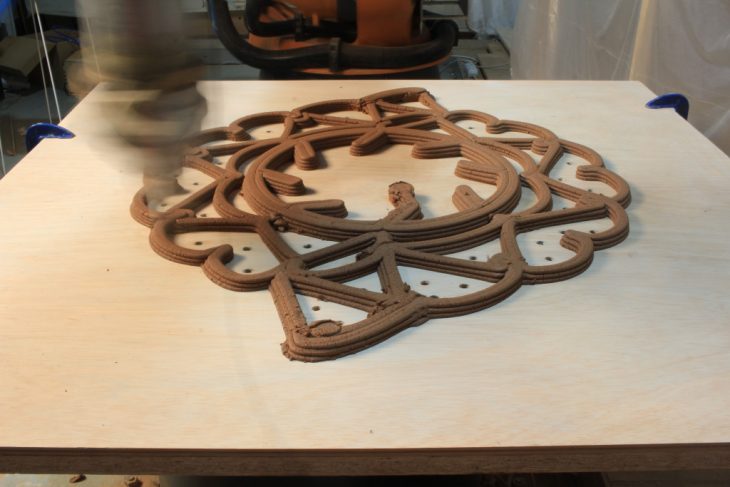
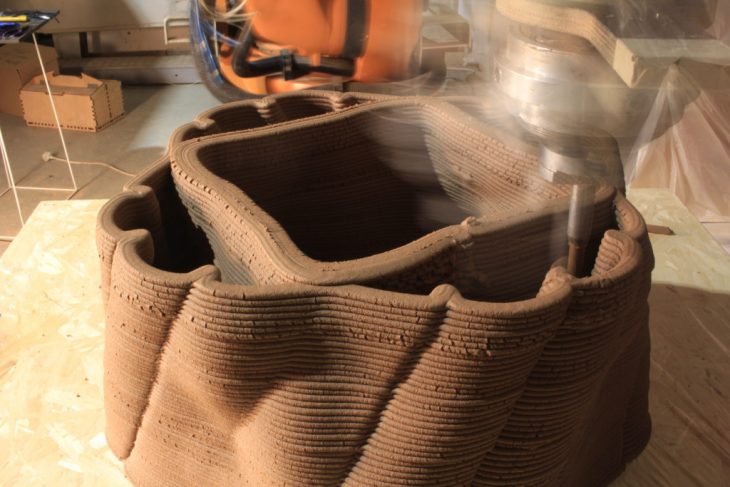
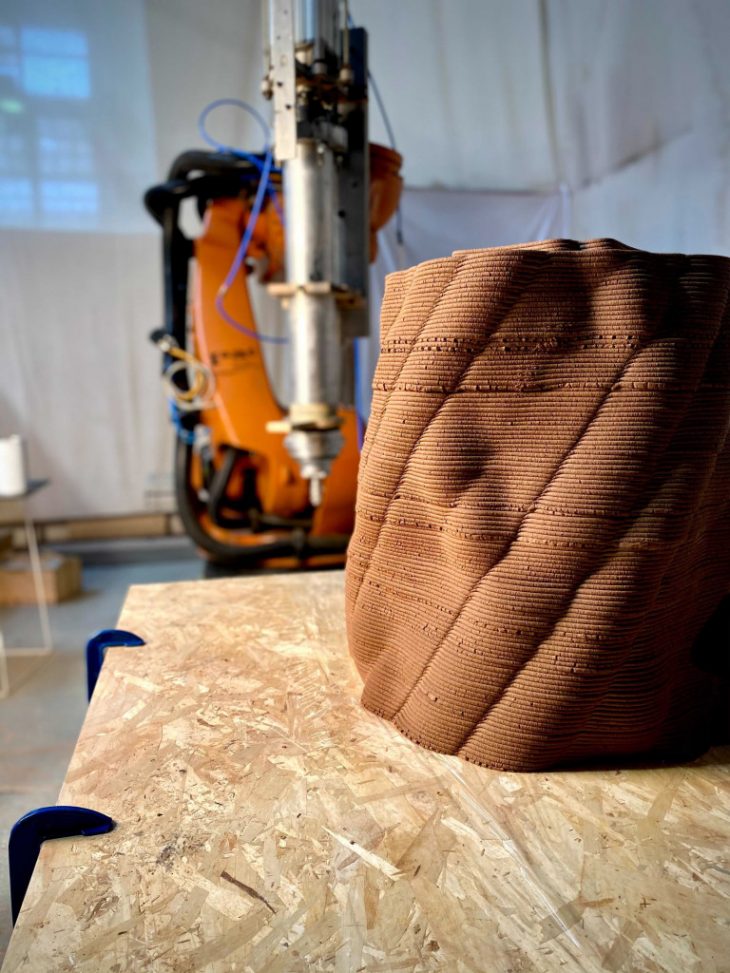
Thermal performance and distribution of the heat through the Geometry.
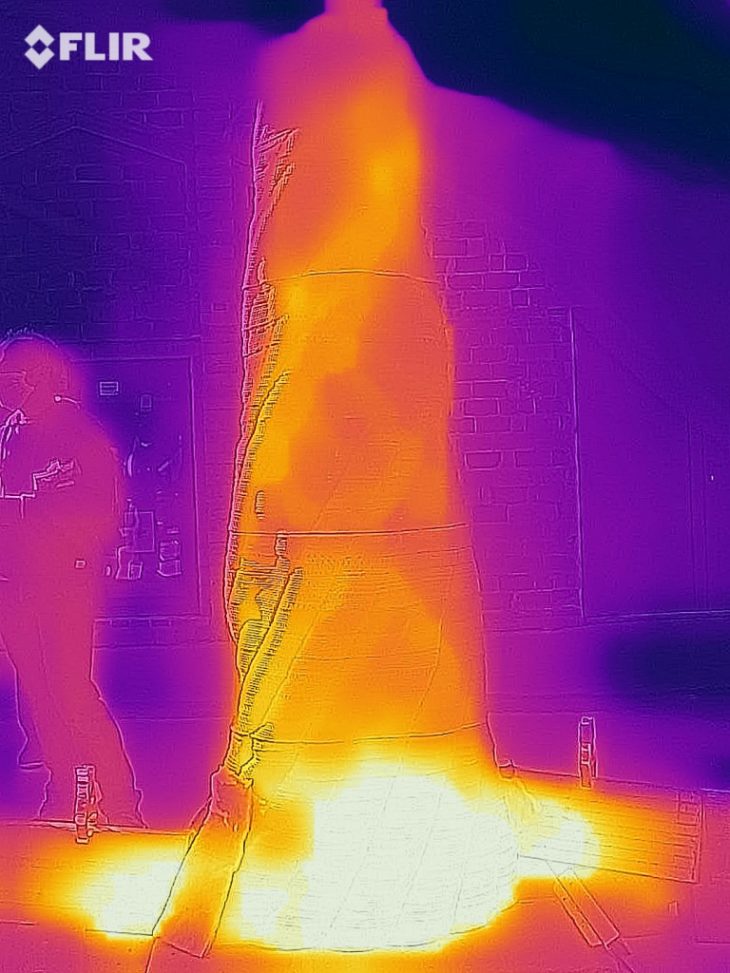
On site assembly:
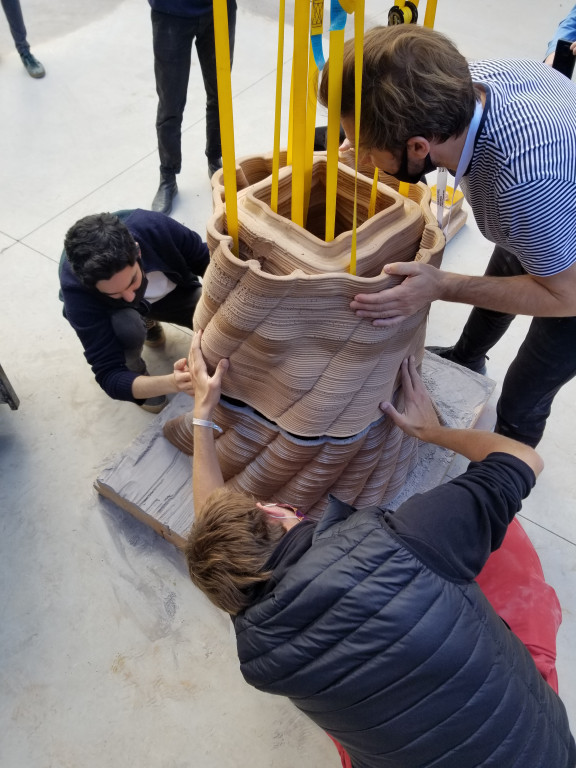
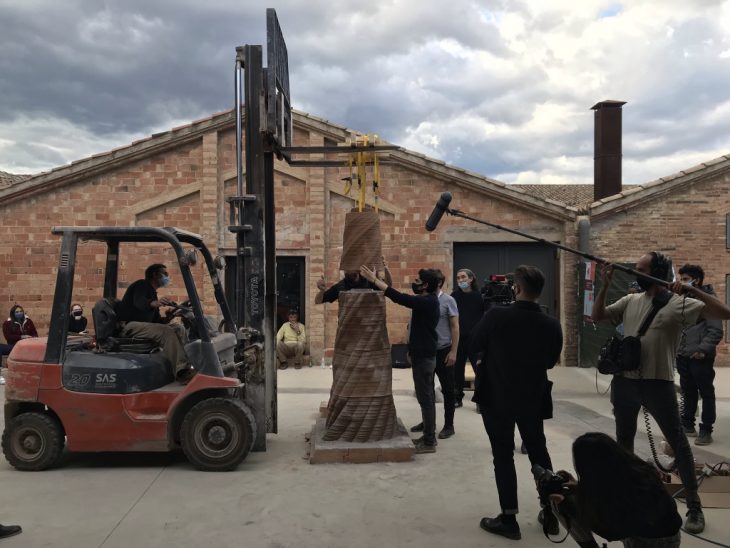
FÈNIX is a project of the Institute of Advanced Architecture of Catalonia (IAAC) in collaboration with the Associació Ceramistes La Bisbal and Argiles Colades, developed within the program OTF: 3D Printing Architecture 2020-2021 for the Terracotta Biennial, an event promoted by the City Council of La Bisbal d’Empordà and the Terracotta Museum within the framework of the COOP`ART EFA219 / 16 project of the POCTEFA program co-financed by the European Regional Development Fund (FEDER).
The project have been developed by :
IAAC Faculty : Edouard Cabay, Alexandre Dubor, Kunal Chadha, Elisabetta Carnavale, Ashkan Foroughi, Eduardo Chamoro, Guillem Baraut, Angelos Chronis.
IAAC Students : Brenda Freitas, Bruno Ganem Coutinho, Francesco Polvi, Luis Buerba, Lynette Masai, Nitha Shivapuram, Roshin Valappil, Tapiwa Manase, Teklehaymanot Woldesenbet, Timur Mukhametkaliyev, Zackary Bryson
Associació Ceramistes La Bisbal : Juan Raventos, Gemma Ribet, David Rossell
Argiles Colades: Jordi Trater

